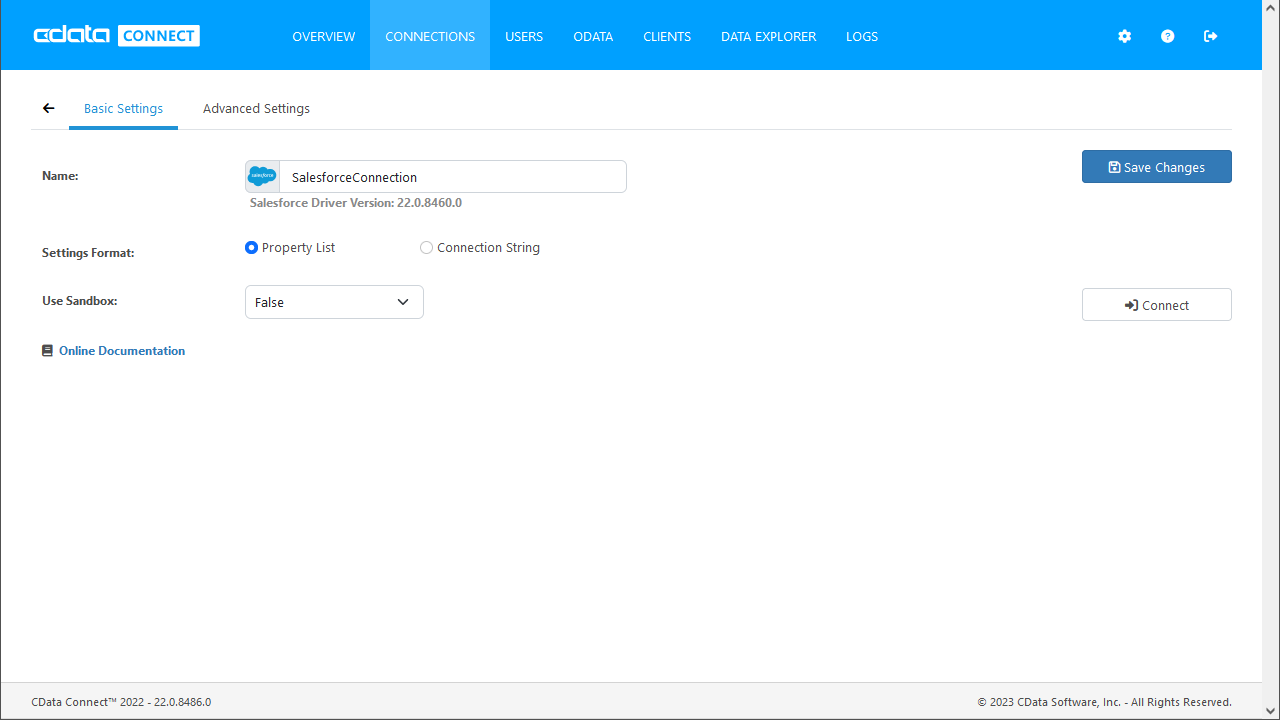Model Context Protocol (MCP) finally gives AI models a way to access the business data needed to make them really useful at work. CData MCP Servers have the depth and performance to make sure AI has access to all of the answers.
Try them now for free →Create Bullhorn CRM Dashboards in Bold BI
Use CData Connect Server to create a virtual SQL Server Database for Bullhorn CRM data to build custom dashboards in Bold BI.
Bold BI allows you to create, share, and collaborate on interactive BI dashboards. When paired with CData Connect Server, you get instant access to Bullhorn CRM data for visualizations, dashboards, and more. This article shows how to create a virtual database for Bullhorn CRM and build reports from Bullhorn CRM data in Bold BI.
CData Connect Server provides a pure SQL Server interface for Bullhorn CRM, allowing you to easily build reports from live Bullhorn CRM data in Bold BI — without replicating the data to a natively supported database. As you build visualizations, Bold BI generates SQL queries to gather data. Using optimized data processing out of the box, CData Connect Server pushes all supported SQL operations (filters, JOINs, etc) directly to Bullhorn CRM, leveraging server-side processing to quickly return the requested Bullhorn CRM data.
Create a Virtual SQL Server Database for Bullhorn CRM Data
CData Connect Server uses a straightforward, point-and-click interface to connect to data sources and generate APIs.
- Login to Connect Server and click Connections.
![Adding a connection]()
- Select "Bullhorn CRM" from Available Data Sources.
-
Enter the necessary authentication properties to connect to Bullhorn CRM.
Begin by providing your Bullhorn CRM account credentials in the following:
- DataCenterCode: Set this to the data center code which responds to your data center. Refer to the list of data-center-specific Bullhorn API URLs: https://bullhorn.github.io/Data-Center-URLs/
If you are uncertain about your data center code, codes like CLS2, CLS21, etc. are cluster IDs that are contained in a user's browser URL (address bar) once they are logged in.
Example: https://cls21.bullhornstaffing.com/BullhornSTAFFING/MainFrame.jsp?#no-ba... indicates that the logged in user is on CLS21.
Authenticating with OAuth
Bullhorn CRM uses the OAuth 2.0 authentication standard. To authenticate using OAuth, create and configure a custom OAuth app. See the Help documentation for more information.
![Configuring a connection (SQL Server is shown).]()
- Click Save Changes
- Click Privileges -> Add and add the new user (or an existing user) with the appropriate permissions.
With the virtual database created, you are ready to connect to Bullhorn CRM data from Bold BI.
Visualize Live Bullhorn CRM Data in Bold BI
The steps below outline connecting to CData Connect Server from Bold BI to create a new Bullhorn CRM data source and build a simple visualization from the data.
- Log into your Bold BI instance, click the data sources tab, create a new data source, and choose the SQL Server connector.
- Choose the basic configuration and set the connection properties:
- Name: Name your connection
- Server name: Your Connect Server instance (CONNECT_SERVER_URL)
- Port: 1433
- Username: Your Connect Server username
- Password: Your Connect Server password
- Mode: Choose Live to query Bullhorn CRM on-demand or choose Extract to load the data into Bold BI
- Database: Choose the database you created from the drop-down menu (bullhorncrmdb)
- Click Connect
- Select the table to visualize and drag it onto the workspace.
- Select a visualization style and add it to the report.
- Click the gear icon for the visualization to configure the visualization properties and assign columns to the visualization.
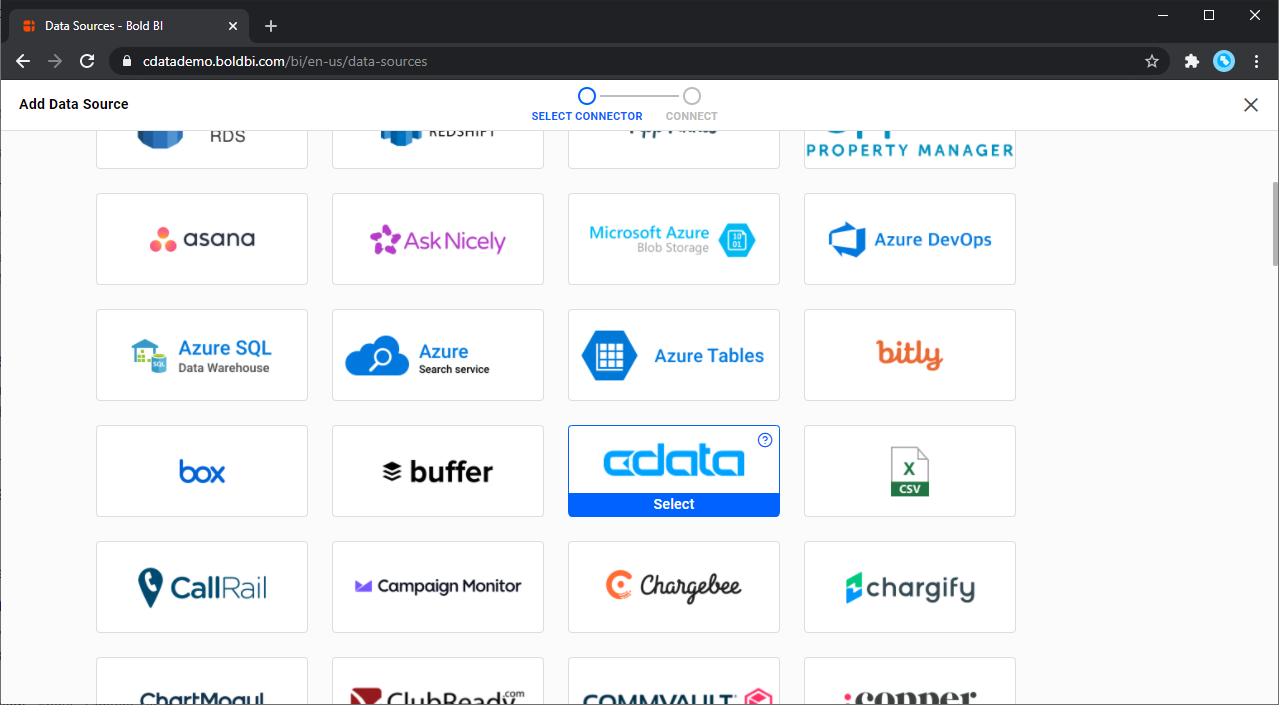
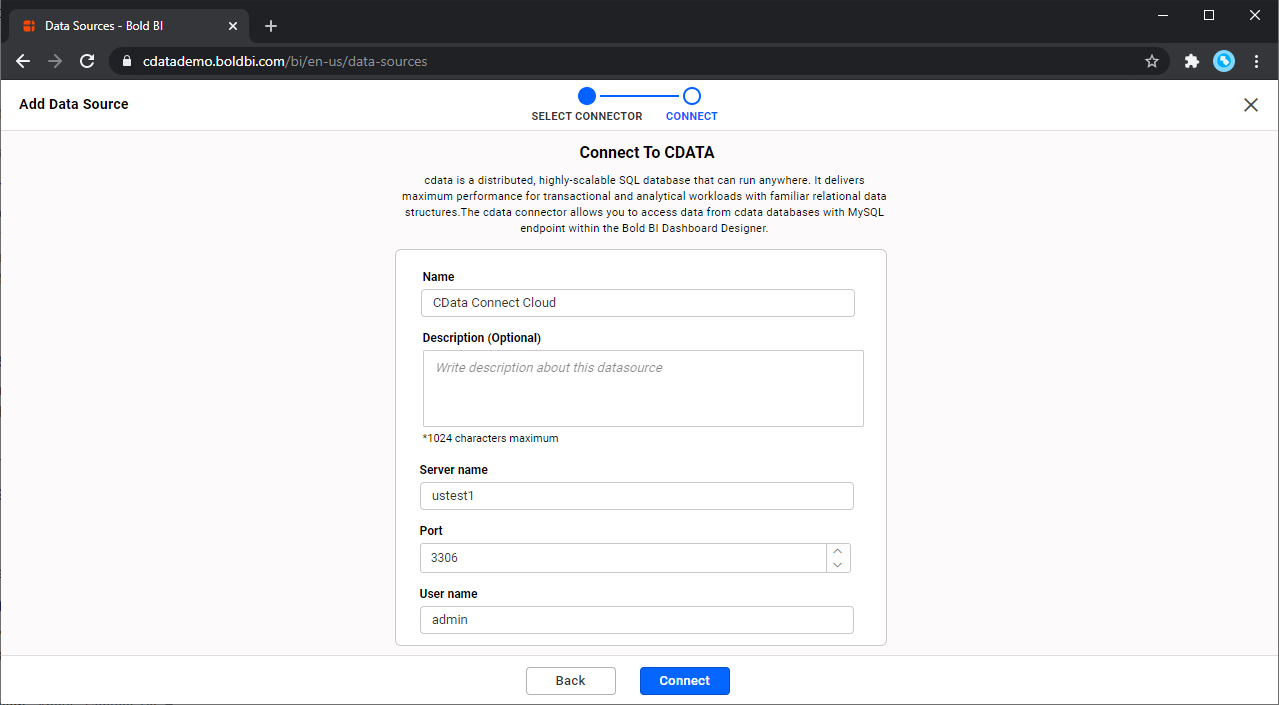
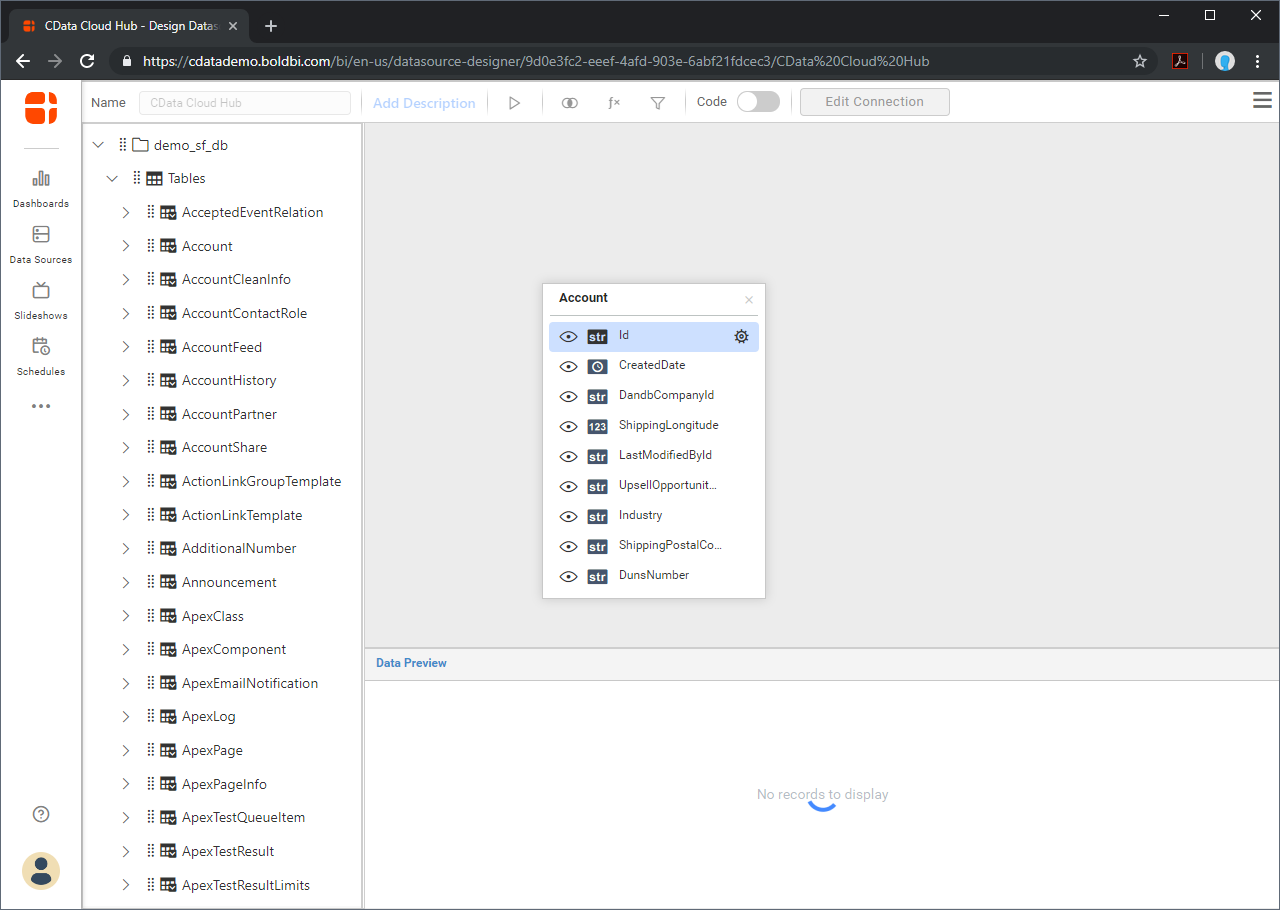
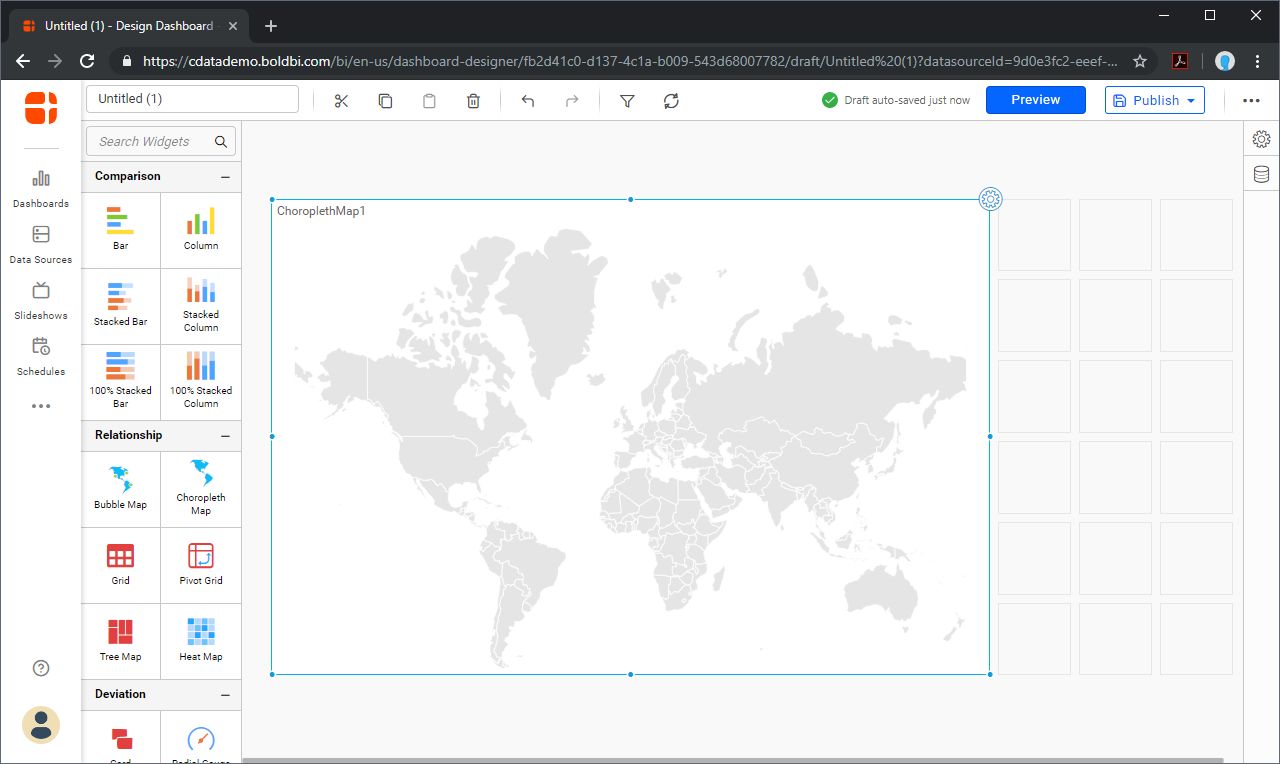
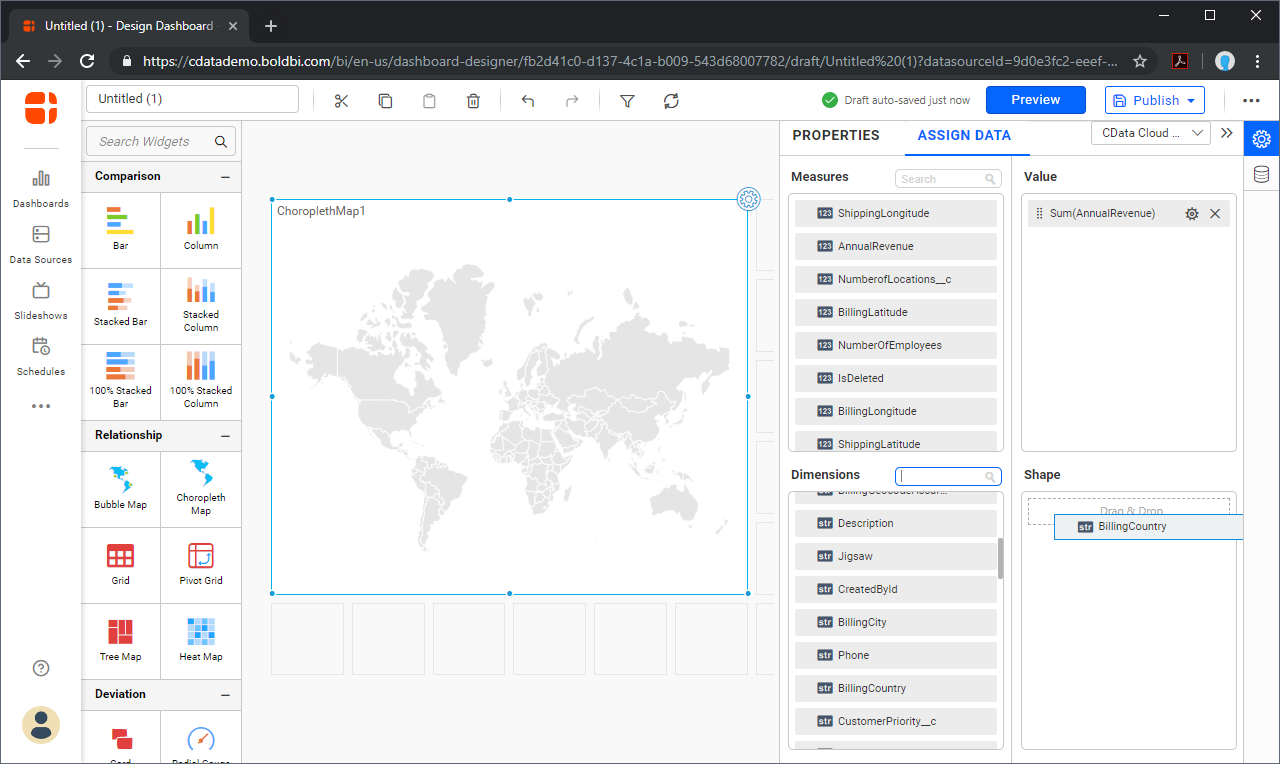
SQL Access to Bullhorn CRM Data from Applications
Now you have a direct connection to live Bullhorn CRM data from your Bold BI workbook. You can create more data sources and new visualizations, build reports, and more — all without replicating Bullhorn CRM data.
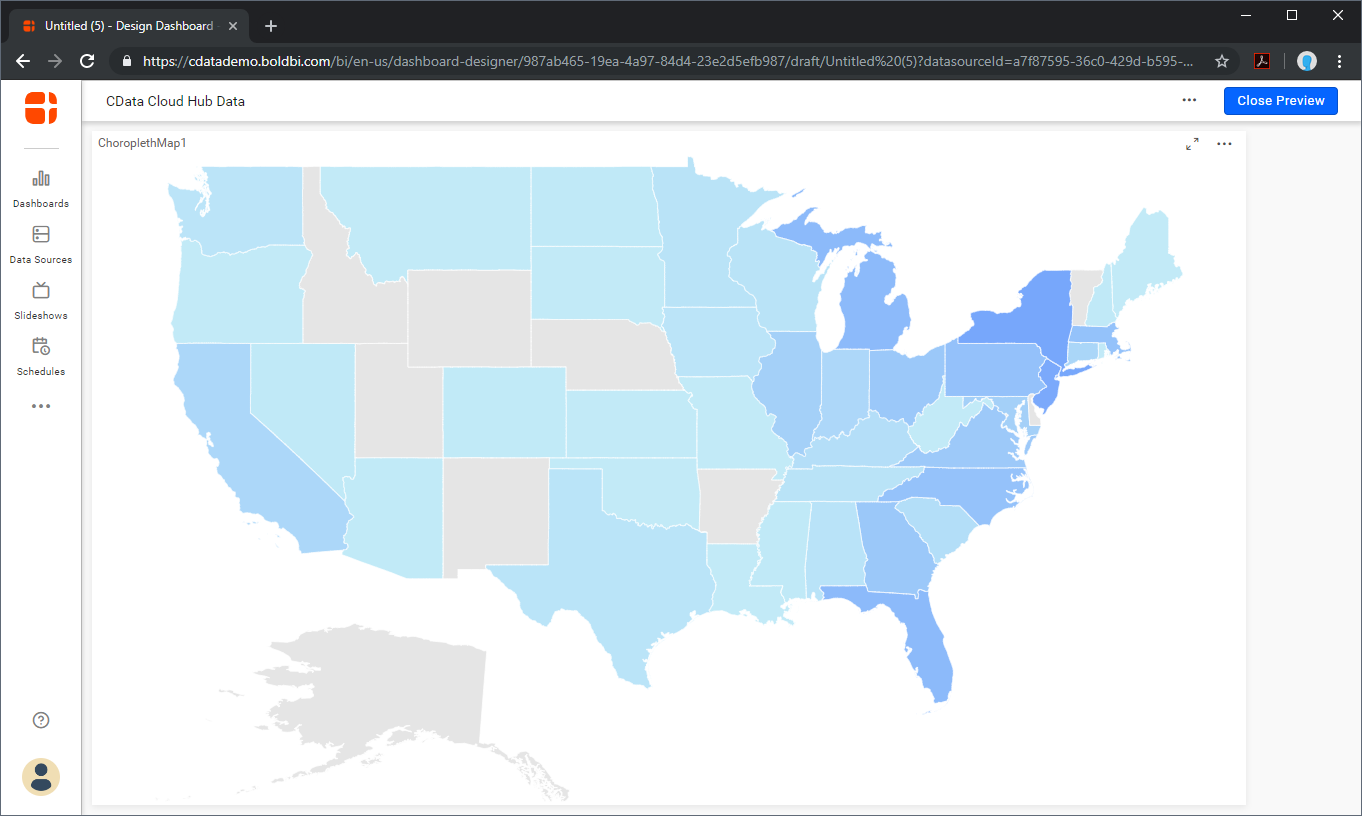
To get SQL data access to 200+ SaaS, Big Data, and NoSQL sources directly from your applications, see the CData Connect page.


